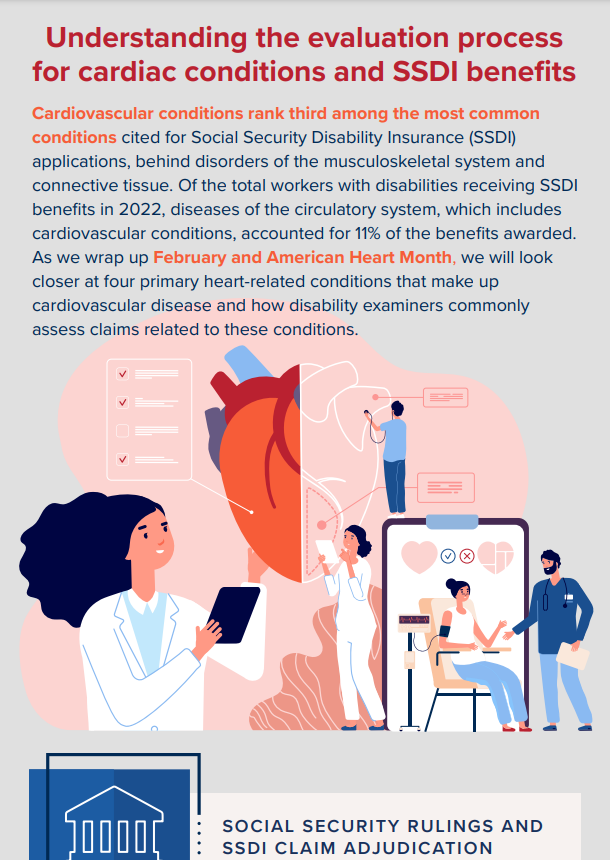Anyone seeking Social Security Disability Insurance (SSDI) benefits must follow the stringent application and evaluation process. The Social Security Administration (SSA) uses a 5-step process to evaluate each application and affirm or deny disability benefits. While some claims are more straightforward, many others have added layers of complexity due to the diagnosis involved. Regardless of diagnosis, those applicants whose impairing condition meets or equals one of the Listing of Impairments in Social Security’s Blue Book will automatically meet Social Security’s strict definition of disability. For those applying for SSDI benefits with a diagnosis of cardiovascular diseases such as coronary heart disease and atrial fibrillation, the Social Security List of Impairments can provide a distinct pathway to approval.
Not every cardiovascular condition appears on the Listing of Impairments, though several do. The Social Security Administration has a distinct listing of conditions of the Cardiovascular System that meet the definition of a condition that “affects the proper functioning of the heart or the circulatory system.” These diagnoses include chronic heart failure, coronary heart disease, recurrent arrhythmias (such as atrial fibrillation), symptomatic congenital heart disease, coronary artery disease, and more.
With American Heart Month taking place in February, we couldn’t let the month slip by without sharing this infographic that dives into four major cardiac-related conditions and the process for qualifying for SSDI benefits – cardiomyopathy, coronary artery disease, atrial fibrillation, and coronary heart disease. With nearly half of Americans suffering from heart disease and as the third most common reason for disability claims received by Social Security, the significance is hard to ignore.
As with any other SSDI application, it must be thorough as it relates to the evidence provided. For cardiac conditions, it is particularly important to demonstrate that a heart disorder exists, how severe it is, and whether it impacts the individual’s ability to achieve a livelihood in any vocation. To be approved for disability benefits as a result of a cardiovascular condition, medical evidence must be provided confirming the condition will prevent the applicant from returning to work for at least the next 12 months or result in the death of the applicant.
We created this infographic to help you understand the SSDI evaluation process for cardiac conditions and to explain what requirements must be met as part of the application process. We take a closer look at four cardiac conditions, only two of which are found directly in the Blue Book within the cardiovascular disorder section, explain the criteria for SSDI claims citing these conditions, and highlight the medical evidence required and conditions that must be met for appropriate determination by the claim examiner.





